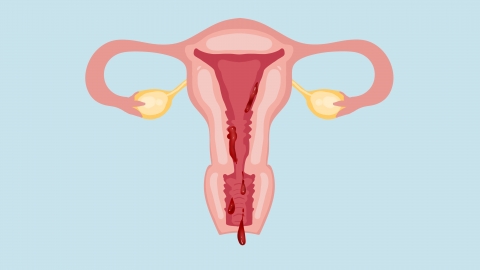What causes hematometra?
In general, hematometra may be caused by factors such as postpartum uterine atony, obstructed menstrual flow, endometritis, cervical adhesion, or uterine malformation. It is recommended to seek timely medical attention, identify the underlying cause, and receive symptomatic treatment under a doctor's guidance. Detailed explanations are as follows:

1. Postpartum Uterine Atony: Insufficient contraction of the uterine muscles after childbirth prevents effective removal of residual blood from the uterine cavity, leading to blood accumulation, which commonly occurs 1-2 days postpartum. The mother should be encouraged to get up and engage in mild activity early to promote uterine contractions. Uterine massage may also be performed under a doctor's guidance.
2. Obstructed Menstrual Flow: Exposure to cold or emotional stress during menstruation may cause spasms of the uterine smooth muscles, blocking menstrual blood discharge and causing it to accumulate in the uterine cavity, often accompanied by dysmenorrhea. Keeping the body warm during menstruation, avoiding cold foods, and applying heat to the lower abdomen can help relieve spasms.
3. Endometritis: Bacterial infection causes inflammation of the endometrium, resulting in local congestion and edema, which affects the discharge of menstrual blood or secretions, leading to blood accumulation. Symptoms may include lower abdominal pressure and abnormal vaginal discharge. Patients should follow medical advice to use medications such as cefixime dispersible tablets, metronidazole tablets, and levofloxacin hydrochloride capsules to control infection. The accumulated blood usually discharges gradually after the inflammation subsides.
4. Cervical Adhesion: Damage to the cervical mucosa during intrauterine procedures may result in adhesion, hindering the discharge of menstrual blood or intrauterine secretions, causing hematometra. Symptoms include amenorrhea and cyclical abdominal pain. Mild adhesions can be separated using a cervical dilator under medical supervision, while severe adhesions may require hysteroscopic lysis of cervical adhesions to restore cervical patency and promote the discharge of accumulated blood.
5. Uterine Malformation: Congenital malformations such as uterine septum or bicornuate uterus can cause abnormal uterine cavity morphology, affecting normal menstrual blood discharge and leading to long-term accumulation and hematometra, which may be accompanied by infertility. If asymptomatic and with minimal accumulated blood, regular observation may be sufficient. However, if the accumulation recurs or affects fertility, hysteroscopic correction of the uterine malformation may be required to improve uterine cavity morphology and prevent recurrence of hematometra.
It is important to maintain good menstrual hygiene, avoid tub bathing and strenuous exercise during menstruation, and follow medical advice for post-procedural care after intrauterine operations to prevent infections. Maintaining a regular作息 and avoiding excessive fatigue can help reduce the risk of developing hematometra through healthy lifestyle habits.




